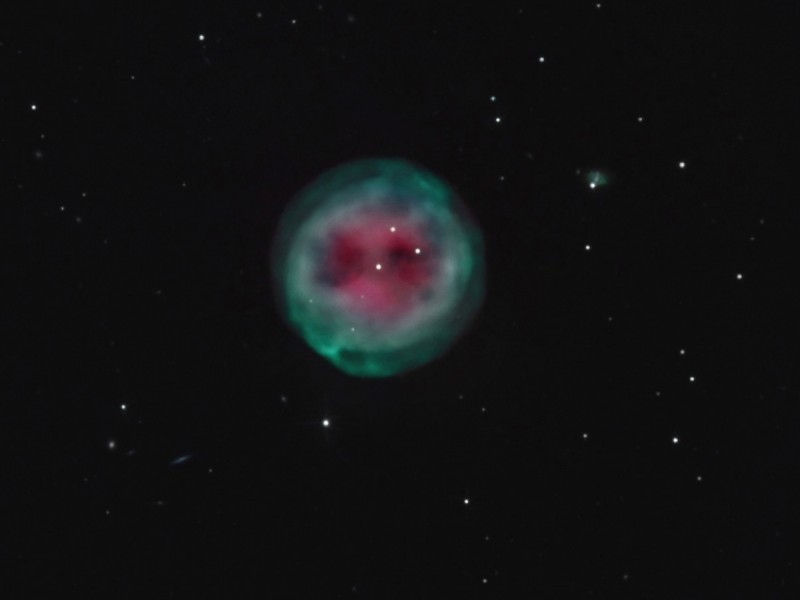
|
по текстам по ключевым словам в глоссарии по сайтам перевод по каталогу |
Credit & Copyright: Keith Quattrocchi
Explanation:
The Owl Nebula is perched in the sky about 2,600 light-years away
toward the bottom of the
Big Dipper's bowl.
Also
cataloged as M97,
the 97th object in Messier's well-known
list, its round shape along with the placement of
two large, dark "eyes" do suggest the face of a
staring owl.
One of the fainter objects in
Messier's catalog,
the Owl Nebula is a
planetary nebula,
the glowing gaseous
envelope shed by
a dying sun-like star as it runs out of
nuclear fuel.
In fact, the Owl Nebula offers an example of the fate of our
Sun as it runs out of fuel in another 5 billion years.
As we see it, the nebula spans over 2 light-years making it
roughly 2,000 times the size of Solar System.
Beautiful to look at,
this
color image shows impressive details within the cosmic owl.
The composite includes images made through
narrow-band filters for a total of 24 hours
of exposure time.
1999 2000 2001 2002 2003 2004 2005 2006 2007 2008 2009 2010 2011 2012 2013 2014 2015 2016 2017 2018 2019 2020 2021 2022 2023 2024 2025 |
Январь Февраль Март Апрель Май Июнь Июль Август Сентябрь Октябрь Ноябрь Декабрь |
NASA Web Site Statements, Warnings, and Disclaimers
NASA Official: Jay Norris. Specific rights apply.
A service of: LHEA at NASA / GSFC
& Michigan Tech. U.
|
Публикации с ключевыми словами:
planetary nebula - M 97 - Планетарная туманность
Публикации со словами: planetary nebula - M 97 - Планетарная туманность | |
См. также:
Все публикации на ту же тему >> | |
